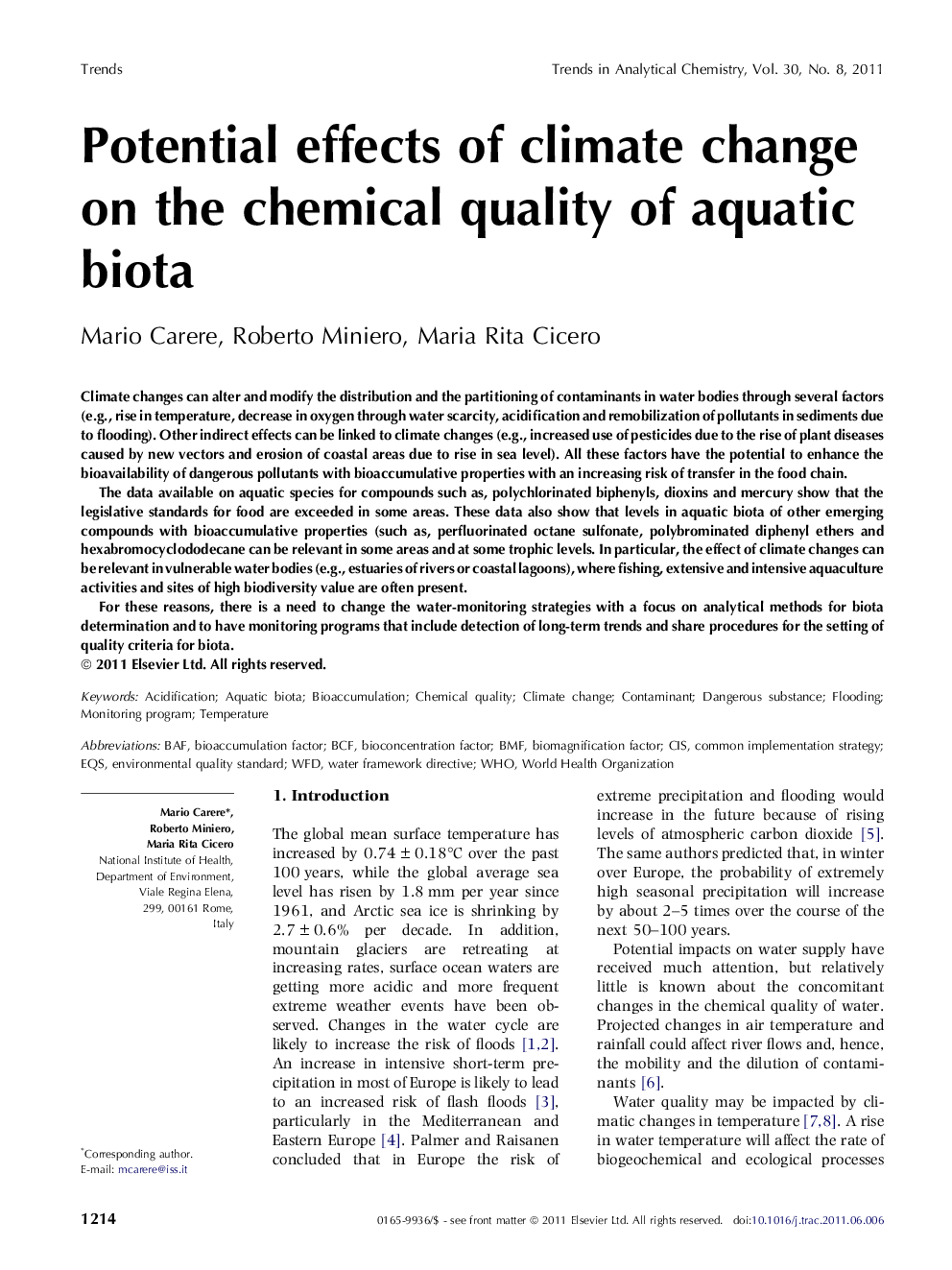| Article ID | Journal | Published Year | Pages | File Type |
|---|---|---|---|---|
| 1248210 | TrAC Trends in Analytical Chemistry | 2011 | 8 Pages |
Climate changes can alter and modify the distribution and the partitioning of contaminants in water bodies through several factors (e.g., rise in temperature, decrease in oxygen through water scarcity, acidification and remobilization of pollutants in sediments due to flooding). Other indirect effects can be linked to climate changes (e.g., increased use of pesticides due to the rise of plant diseases caused by new vectors and erosion of coastal areas due to rise in sea level). All these factors have the potential to enhance the bioavailability of dangerous pollutants with bioaccumulative properties with an increasing risk of transfer in the food chain.The data available on aquatic species for compounds such as, polychlorinated biphenyls, dioxins and mercury show that the legislative standards for food are exceeded in some areas. These data also show that levels in aquatic biota of other emerging compounds with bioaccumulative properties (such as, perfluorinated octane sulfonate, polybrominated diphenyl ethers and hexabromocyclododecane can be relevant in some areas and at some trophic levels. In particular, the effect of climate changes can be relevant in vulnerable water bodies (e.g., estuaries of rivers or coastal lagoons), where fishing, extensive and intensive aquaculture activities and sites of high biodiversity value are often present.For these reasons, there is a need to change the water-monitoring strategies with a focus on analytical methods for biota determination and to have monitoring programs that include detection of long-term trends and share procedures for the setting of quality criteria for biota.
